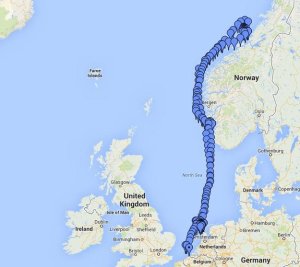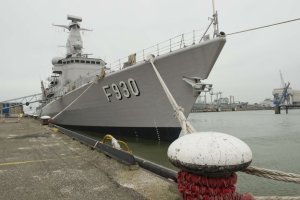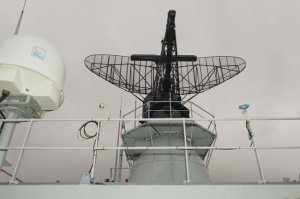Results are being processed from the first Galileo maritime trials outside of mainland Europe. The long-range, high-latitude testing spanned the North Sea, following the same historical sailing route that Viking dragon-ships used 1200 years ago.
The Belgian frigate Leopold I-F930 during the first high-latitude trials of Europe’s Galileo satellite navigation system sailed first from the Dutch marine base of Den Helder on 4 December 2013 to Stavanger in Norway. From there it progressed north in very rough seas with 10-m high waves, coming close to the Arctic circle on 17 December (a first for Galileo PRS observations) before heading homeward.
This frigate carried the most up-to-date equipment possible, with multiple Galileo receivers for both its public Open Service (OS) and secure Public Regulated Service (PRS).
Miguel Manteiga Bautista, head of ESA’s Global Navigation Satellite System (GNSS) Security Office, states that “We are engaging in all kinds of experimental demonstrations of all Galileo services, in particular PRS, which offers the most highly accurate positioning and timing performance, but with access strictly restricted to authorised users.”
The testing provided evidence of Galileo signal stability across both its operating frequencies up at high latitudes, equalling low satellite elevations in the local sky.
Following the completion of earlier road, then flight, testing last summer and autumn, the last challenge for Galileo’s IOV phase was to engage in a long-term maritime trial into high latitudes.
A dual test setup was fitted to the frigate connected a PRS receiver and an OS receiver, both manufactured in Belgium by Septentrio NV, to a common antenna. The PRS receiver recorded raw PRS measurements on both frequencies while the OS receiver logged data from openly available Galileo, GPS and Glonass signals at one-second intervals.
This was the first time of PRS equipment outside EU borders, therefore the security issues were quite challenging. Several partners from different countries and industries were involved, assuring at all times the necessary security.
This test is a significant milestone on the road to demonstrating early PRS capability across a range of platforms.
Alain Muls, Professor of the Royal Military Academy of Belgium, faced the challenge of coordinating the maritime trial without interfering with the normal operations of the frigate: “Thanks to the cooperation of with the Maritime Component of the Belgium Defence, in particular that of the frigate’s commander and crew, preliminary results look very promising.
Results from the trial will guide future Galileo developments for years to come.
Participants: ESA, European Comission, European GNSS Office Agency, Royal Military Academy of the Belgian Ministry of Defence, UK Space Agency, Nottingham Scientific Ltd and Septentrio NV



